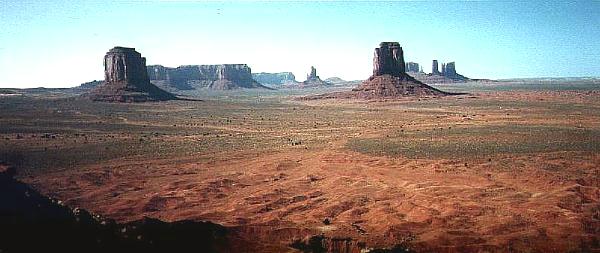
Dominance/diversity models (continued)
Lecture
graphics
If the relative abundances of spp. are governed by relatively
independent factors, then we might expect the relative
importances of spp. to be approx. normally-distributed
- Note that old-field succession tends to: [Whittaker 1972,
Taxon 21:213-251]
- geometric -------> log-normal -------> increased dominance by
- trees -------> steepening of log-normal distribution
- According to May (1975 in Cody and Diamond, eds., Ecology and
Evolution of Communities):
- ... the lognormal distribution is associated with [results]
of random variables, and factors that influence large and
heterogeneous assemblies of species indeed tend to do so in
this fashion.
- ... if the environment is randomly fluctuating, or
alternatively as soon as several factors become significant
..., we expect the statistical Law of Large Numbers to take
over and produce the ubiquitous lognormal distribution.
- Colinvaux (1986 Ecology text, p. 676):
- Log-normal populations result when the abundance of each
species pop'n is determined at random relatively
independently of other species populations. The prevalence
of log-normal distributions shows that the relative
distributions of animals and plants very often is determined
by random processes.
- Thus, interactions appears to be less important in the lognormal
model than in the niche pre-emption (geometric series) model
- The log-normal model may be expected in relatively spp.-rich
communities where many factors (which are largely
independent) influence spp. performance
- Broken-stick model
- Pr = (N/s)
 [1/(s-i+1)],
where
[1/(s-i+1)],
where
- s = no. spp.,
- N = no. individuals,
- i = spp. sequence from least to most important, and
- Pr = I.V. of sp. n in sequence from least important
(i=1) thru sp. in question
- e.g., given N=100 individuals of s=3 spp.,
| Spp. | Pr |
| 1 | (100/3)[1/(3-1+1)] = 11.1 |
| 2 | (100/3)[1/(3-1+1) + 1/(3-2+1) = 27.8 |
| 3 | (100/3)[1/(3-1+1) + 1/(3-2+1) + 1/(3-3+1)] = 61.1 |
Note  Pr = Pr =
| 100 |
- Acc. to May (1975), this model is applicable to communities
comprising a limited number of taxonomically similar spp. ...
(Colinvaux 1986 refers to spp. of a guild)
- ... in competitive contact w/ each other in a relatively
homogeneous habitat; in this situation, a more structured pattern
of relative abundances of spp. (other than that resulting from
conditions associated w/ log-normal distribution) may be
expected. The basic picture is one of intrinsically even
resource division of some major environmental resource. In this
model, species are limited by competition at randomly located
boundaries.
Previous
lectureNext lecture
 [1/(s-i+1)],
where
[1/(s-i+1)],
where Pr =
Pr =
